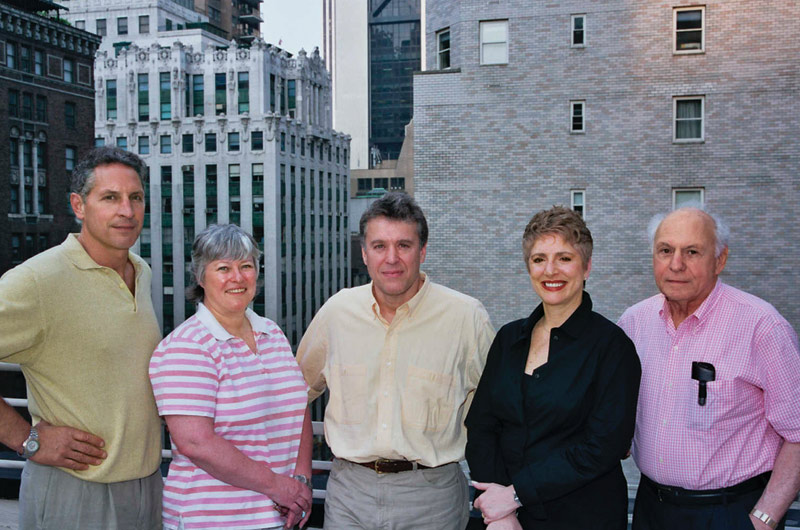The daytime drama has proven to be one of the most popular and enduring forms of entertainment since its inception nearly six decades ago. Since then there have been many technological advancements that have impacted how these shows are made. The DGA hosted a seminar on directing the daytime drama to discuss the new challenges of a long-established form. Larry Auerbach, a veteran director whose extensive list of credits includes All My Children, As the World Turns and Another World and this year's Honorary Life Member from DGA, moderated the evening.
"When we started soaps back in the '50s, they were black and white, 15 minutes with a very limited cast and lots of rehearsal," Auerbach said. "Today they're in color, an hour long and have casts of thousands sometimes."
Casey Childs (All My Children) is fond of those days, having studied them to help inform his own technique. "I go back and look at the tenets of good old-fashioned direction, old-fashioned in the best sense of the word," said Childs who's been directing daytime for 18 years. "The people who directed in the '40s and '50s really defined what television and what live cut technique was. Most shows are shot now with four or five cameras with their own tape machine."
"What is lost is the director's energy that could be felt from scene to scene and shot to shot," said Jo Anne Sedwick (Guiding Light) who began as an actress before becoming a director 15 years ago. "Now we're running fast and furious and put it together in the editing room."

From left: Gary Donatelli, Jo Anne Sedwick, Casey Childs, Maria Wagner and Larry Auerbach
Gary Donatelli started as a technical director for One Life to Live before becoming one of its directors. "It's this homogenous blend we're looking for now, so that you can go from one director to another on the show and not see the difference and I think it's too bad."
"What are some of the problems that arise out of that kind of production?" Auerbach asked.
"I think you lose your audience," answered Childs. "When you go back to those older shows you could say, 'Oh, that's a David Pressman show' because you could see how the director brought you in [to the story], you'd notice a certain sequencing of shots, a certain cutting technique. That's basically all gone now."
It probably comes as no surprise that the reason behind this shift in directing daytime has to do with dollars and cents. As Maria Wagner (As the World Turns) said, "As much as we dislike it, or prefer the old way, it's cheaper to throw it together in the edit. I think we have to learn to work within the system because I don't think it's ever going to go back, certainly not in daytime."
"Six in five" is a very common term among directors of daytime drama as it describes the week of shooting
"From the production assistant up to the director, every level is very important," said Wagner. "Without them we couldn't create what we create. And I think that we're all lucky to have very good people."
"A lot of the time it's the Associate Director taking it down the trail for us, so the communication between us and the Associate Director is very important," Donatelli said. His assistant directors not only sit side by side with the director, but are often involved with the post-production as well. "Our Associate Director situation is such that now with the editing we went to Disney and actually got credit and a little more money for them. It was acknowledged that their role had expanded on the show."
"What is it like to work with actors on such a limited schedule?" asked an audience member.
"I come from the theater where we would sit around a table and work on the script for a week before we even stood up. In television, you don't even sit down to work on the script," answered Childs. "And that was the most refreshing thing about going in to it, because in theater it was all process. Here it is no process, there's a stunning lack of process!"
While the lack of process, hectic schedule, and technological advancements which seem to have impeded on creating an individual style, it was clear that all the panelists loved being part of it and thrived on the challenges of working in daytime. "It's the craziest job, but it's a great job," said Donatelli. "But the job is to show up to work and get out of there as soon as possible!"